Related Research Articles

The House of Bonaparte is a former imperial and royal European dynasty of French and Italian origin. It was founded in 1804 by Napoleon I, the son of Corsican nobleman Carlo Buonaparte and Letizia Buonaparte. Napoleon was a French military leader who rose to power during the French Revolution and who, in 1804, transformed the French First Republic into the First French Empire, five years after his coup d'état of November 1799. Napoleon and the Grande Armée had to fight against every major European power and dominated continental Europe through a series of military victories during the Napoleonic Wars. He installed members of his family on the thrones of client states, expanding the power of the dynasty.

Jérôme-Napoléon Bonaparte was the youngest brother of Napoleon I and reigned as Jerome Napoleon I, King of Westphalia, between 1807 and 1813.

Joseph-Napoléon Bonaparte was a French statesman, lawyer, diplomat and older brother of Napoleon Bonaparte. During the Napoleonic Wars, the latter made him King of Naples (1806–1808), and then King of Spain (1808–1813). After the fall of Napoleon, Joseph styled himself Comte de Survilliers and emigrated to the United States, where he settled near Bordentown, New Jersey, on an estate overlooking the Delaware River not far from Philadelphia.

Lucien Bonaparte, 1st Prince of Canino and Musignano, was a French politician and diplomat of the French Revolution and the Consulate. He served as Minister of the Interior from 1799 to 1800 and as the president of the Council of Five Hundred in 1799.

Napoleon Bonaparte, later known by his regnal name Napoleon I, was a French military officer and statesman who rose to prominence during the French Revolution and led a series of successful campaigns across Europe during the French Revolutionary and Napoleonic Wars from 1796 to 1815. He was the leader of the French Republic as First Consul from 1799 to 1804, then of the French Empire as Emperor of the French from 1804 to 1814, and briefly again in 1815.

Paul François Jean Nicolas, Vicomte de Barras, commonly known as Paul Barras, was a French politician of the French Revolution, and the main executive leader of the Directory regime of 1795–1799.
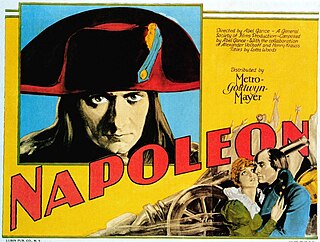
Napoléon is a 1927 French silent epic historical film, produced, and directed by Abel Gance that tells the story of Napoleon's early years. It is also the only film to use Polyvision. On screen, the title is Napoléon vu par Abel Gance, meaning "Napoleon as seen by Abel Gance". The film is recognised as a masterwork of fluid camera motion, produced in a time when most camera shots were static. Many innovative techniques were used to make the film, including fast cutting, extensive close-ups, a wide variety of hand-held camera shots, location shooting, point of view shots, multiple-camera setups, multiple exposure, superimposition, underwater camera, kaleidoscopic images, film tinting, split screen and mosaic shots, multi-screen projection, and other visual effects. A revival of Napoléon in the mid-1950s influenced the filmmakers of the French New Wave. The film used the Keller-Dorian cinematography for its color sequences.
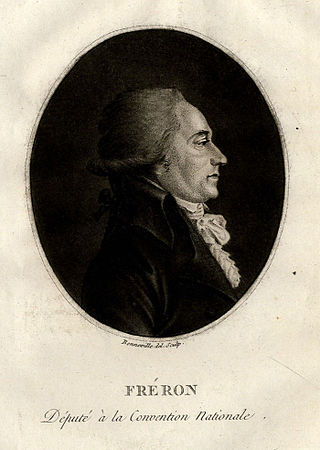
Louis-Marie Stanislas Fréron was a French politician, journalist, representative to the National Assembly, and a representative on mission during the French Revolution.
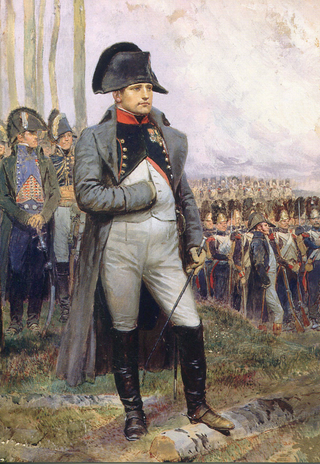
Napoleon I, Emperor of the French, has become a worldwide cultural icon generally associated with tactical brilliance, ambition, and political power. His distinctive features and costume have made him a very recognisable figure in popular culture.

The Man of Destiny is an 1897 play by George Bernard Shaw, set in Italy during the early career of Napoleon. It was published as a part of Plays Pleasant, which also included Arms and the Man, Candida and You Never Can Tell. Shaw titled the volume Plays Pleasant in order to contrast it with his first book of plays, Plays Unpleasant.
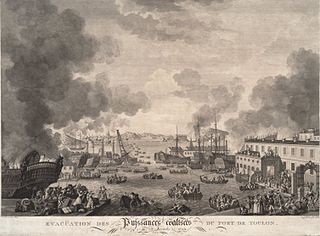
The siege of Toulon was a military engagement that took place during the Federalist revolts and the War of the First Coalition, part of the French Revolutionary Wars. It was undertaken by forces of the French Republic against Royalist rebels supported by Anglo-Spanish forces in the southern French city of Toulon. It was during this siege that young Napoleon Bonaparte first won fame and promotion when his plan, involving the capture of fortifications above the harbour, was credited with forcing the city to capitulate and the Anglo-Spanish fleet to withdraw. The siege marked the first involvement of the British Royal Navy with the French Revolution.
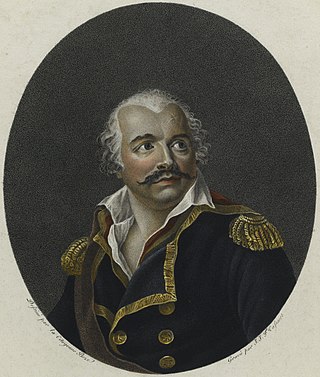
Jean Baptiste François Carteaux was a French painter who became a General in the French Revolutionary Army. He is notable chiefly for being the young Napoleon Bonaparte's commander at the siege of Toulon in 1793.

Charles, Prince Napoléon is a French politician who is the disputed head of the Imperial House of France and, as such, heir to the legacy of his great-great-granduncle, Emperor Napoléon I.

The French invasion of Egypt and Syria was a military campaign in and occupation of Ottoman territories in Egypt and Syria by French forces under the command of Napoleon took place during the French Revolutionary Wars. It was the primary purpose of the Mediterranean campaign of 1798, in which the French captured Malta while being followed by the British Royal Navy, whose pursuit was hampered by a lack of scouting frigates and reliable information.

Bonaparte Crossing the Alps is a 1848–1850 oil painting by French artist Paul Delaroche. The painting depicts Napoleon Bonaparte leading his army through the Alps on a mule,[I] a journey Napoleon and his army of soldiers made in the spring of 1800 in an attempt to surprise the Austrian army in Italy. Several versions of this painting exist: in the Louvre- Lens and the Walker Art Gallery in Liverpool, England. Queen Victoria owned a small version of it.
Events from the year 1806 in France.
Events from the year 1811 in France.
Events from the year 1807 in France.
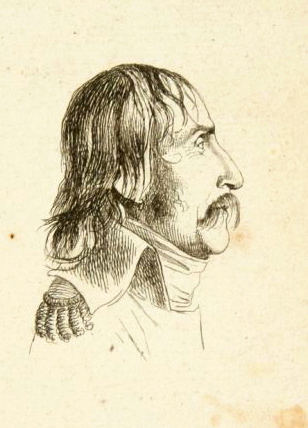
Count of the Empire Pierre-Louis Dupas was a French soldier who rose to prominence during the French Revolutionary Wars, was noted for his association with Napoleon Bonaparte, and rose to the top military rank of General of Division during the Napoleonic Wars. A fiery commander, often noted for bravery, Dupas was often wounded in action, triggering physical infirmities, which eventually forced him to retire from active service, at first temporarily, in 1809 and then permanently, in late 1813.
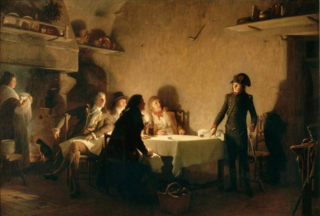
Le souper de Beaucaire was a political pamphlet written by Napoleon Bonaparte in 1793. With the French Revolution into its fourth year, civil war had spread across France between various rival political factions. Napoleon was involved in military action, on the government's side, against some rebellious cities of southern France. It was during these events, in 1793, that he spoke with four merchants from the Midi and heard their views. As a loyal soldier of the Republic he responded in turn, set on dispelling the fears of the merchants and discouraging their beliefs. He later wrote about his conversation in the form of a pamphlet, calling for an end to the civil war.